

CLIMATE RESILIENCE IN RAIL
CURRENT CLIMATE IN SUMMER 2024
The UK is projected to experience its wettest summer in over 100 years. The Met Office has warned of up to 50 wet days, potentially surpassing the 55 rainy days recorded in 1912, the previous record. Cyclical periods of very wet weather, followed by hot, dry weather, significantly increase the instability of railway embankments, a growing trend on the UK rail network.
The UK experienced its warmest May on record and warmest Spring in a series going back to 1884.1 The UK provisionally recorded a mean temperature of 13.1°C. This is 2.4°C above the average May temperature and 1°C above the previous record (12.1°C in 2008). Spring heatwaves result in more considerable diurnal temperature variations than summer heatwaves. The variations increase cyclical loading on electrification equipment, this may decrease lifespans - particularly on equipment such as headspans.
The chance of the UK seeing 40°C days is 10 times more likely in the current climate than in the past. By 2070, regions in the south could have average hottest days reaching 40°C.2
There is strong evidence that increasing sea temperatures increase the intensity of storms.3 Recent North Atlantic heating anomalies have made parts close to 5 degrees hotter than average of the ocean. The likelihood of storm damage to ageing electrification equipment in the UK is increasing.
Climate resilience is built in to new and renewed electrification; they are reliable even in a changing world. The highest risk is to electrification equipment built before the 1990’s.
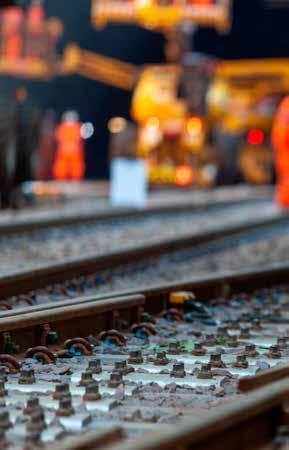



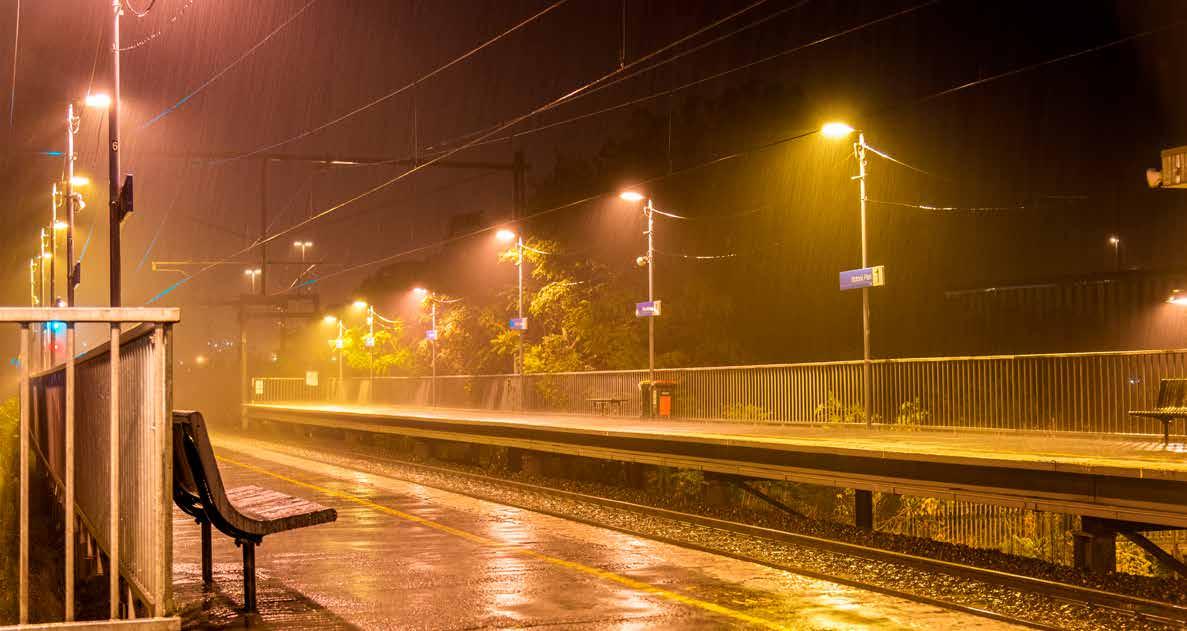
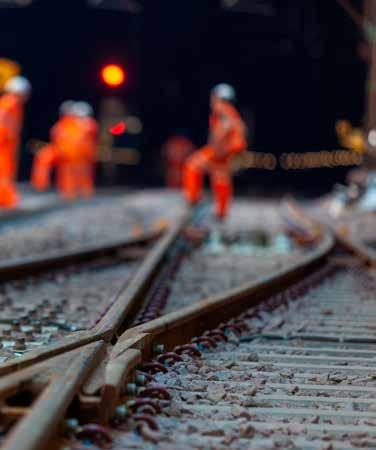
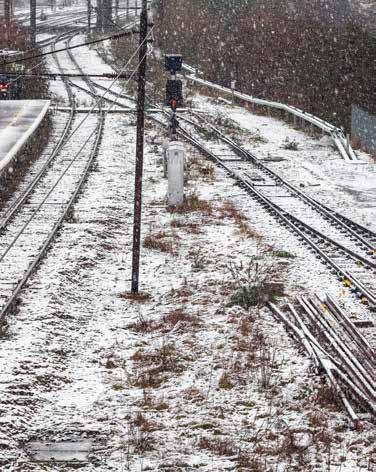

ELECTRIC RAILWAYS REDUCING CLIMATE CHANGE IMPACT
Electric trains are critical to decarbonising the UK. In a world of change, electrification has proven to deliver modal shift and reliable infrastructure.
CIRCLE-STERLING AFFORDABILITY
Electric trains are cheaper to purchase, maintain and power than diesel trains, saving up to £2-3 million per vehicle over their life.
CIRCLE-BOLT ENERGY EFFICIENCY
Electric trains are nearly three times more energy-efficient than diesel or hydrogen. Additionally, regenerative braking recovers up to 20% of energy.
WRENCH RELIABILITY
Electric trains are 40% more reliable on long-distance routes and up to 300% more for suburban routes.
SEEDLING ENVIRONMENTAL FRIENDLINESS
Electric trains emit no pollutants at the point of use, improving air quality.
CIRCLE-DOWN LOWER EMBEDDED CARBON
Electrification infrastructure's carbon payback period is about four years, drastically lower than diesel alternatives.
CIRCLE-INFO For more information scan the QR code
riagb.org.uk/RIA/Newsroom/ Publications%20Folder/ Rail_Electrification_The_Facts.aspx
WAVEFORM NOISE POLLUTION REDUCTION
Electric trains are significantly quieter, benefiting passengers and nearby communities.
SEAT-AIRLINE CAPACITY
Electric trains offer more seats than diesel and bi-mode trains due to no need for on-board fuel storage.
TRANSFORMER-BOLT NO FUEL LOGISTICS
Electrification eliminates the need for fuel storage and delivery, reducing road traffic and emissions.
TRAIN-TRAM PROVEN TECHNOLOGY
With over 100 years of use, overhead electrification is a mature, reliable technology.
WIND-TURBINE FUTURE PROOFING
Electric trains can be powered by renewable energy, making them less dependent on global fuel markets.
CLIMATE CHANGE IMPACT ON RAIL ELECTRIFICATION
È Extreme heat and wind have the highest impact on rail electrification in the short term
È An increase in rainfall and heat will affect embankment stability, resulting in an increased likelihood of structure failures and dewirement incidents.
È Greater daily temperature variations cause increased thermal loading on equipment.
È Rising sea levels increase the risk of coastal flooding and equipment exposure to corroding agents.


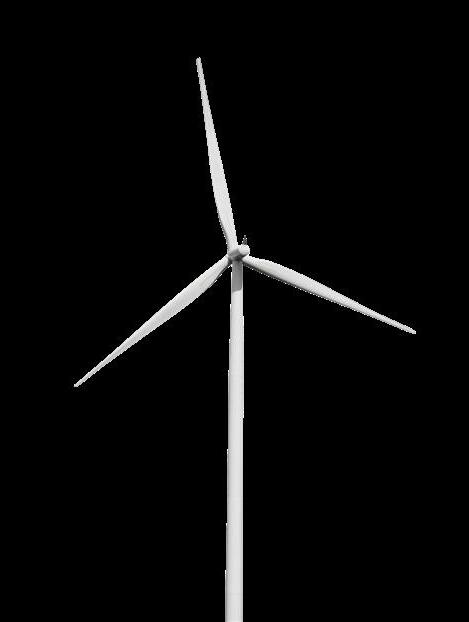
RECOMMENDATIONS
Base (set-up) temperatures are too low, and the existing systems' temperature ranges need to be reviewed.
Cultural shift within risk-based maintenance to increase remote asset monitoring and data collection.
Immediate assessment and renewal of vulnerable legacy assets.
Implementation of naturebased solutions for climate change resilience.
Further investigation into climate change impact on OLE systems.
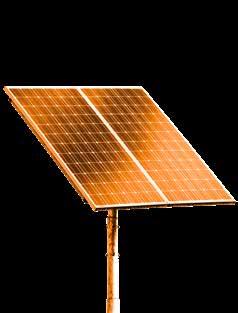
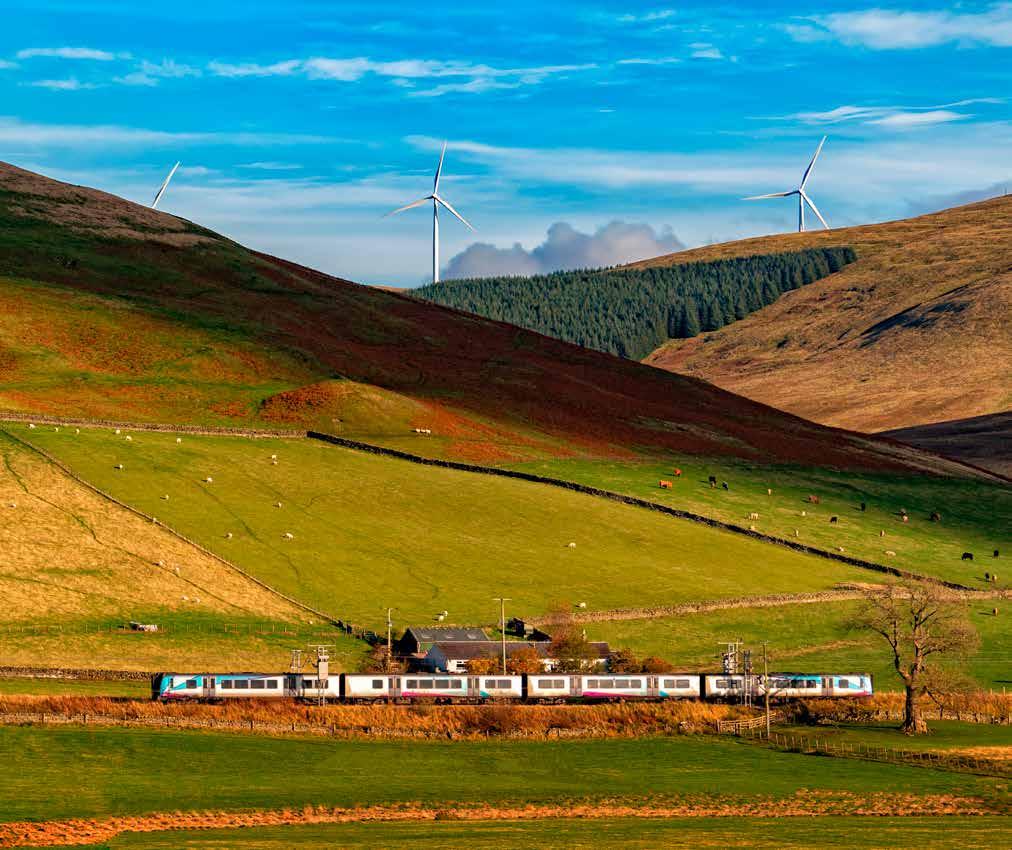
TOP 5 UK EXISTING ELECTRIFICATION MOST AT RISK
1 MANCHESTER TO HADFIELD AND GLOSSOP
Built from 1938 to 1954 in DC and converted to 25kV in 1984. A lot of original fixed termination equipment exists. This route is by far the most impacted, with regular speed restrictions even in mild hot weather.
2 LONDON FENCHURCH STREET TO TILBURY
The remaining fixed termination equipment is life expired and highly vulnerable to temperature increases. Some other parts of the line were recently renewed, but much remains original equipment built in the 1950s and 1960s, originally in DC equipment, before being converted to 25kV.
3 WEST ANGLIA MAINLINE LINES
Large parts remain Mk1 equipment from the 1960s in DC and later converted to 25kV AC. The line is already highly unreliable, and the impact of climate changes on already aging equipment will be significant. The initial focus should be on fixed termination areas, before renewing the remainder.
4 WEST COAST MAINLINE
Sections between Crewe and Glasgow have not been renewed and have increased unreliability.
5 GREAT WESTERN
Newly electrified Great Western has performed exceptionally in recent heatwaves. However, the 1 12-mile section from Paddington Station was electrified decades ago and was not designed for today's service patterns. This section is a weak point in the network.
Other areas of the UK rail network need a risk-based review, with works targeted at those areas most at risk. For example, targeting specific areas on the East Coast Mainline or the unrenewed areas of Great Eastern.
IMPACT OF CLIMATE CHANGE TO RAIL AND ELECTRIFICATION SYSTEMS

2. GLOBAL GREENING
2.1 Increased vegetation encroachment. More vegetation management.
2.2 Increased risk and impact of lineside fires.
2.3 Increased trippings.

1. CHANGES IN THE HYDROLOGICAL CYCLE
1.1 Increased rodents and bird nesting activity. Failures to cables, more bird strikes.


4. WARMER LAND AND AIR
4.1 Balance Weight Anchors, Tensorex and other tensioning equipment reaching their limits.
4.2 Increased speed restrictions in fixed termination areas and risk of failures
4.3 Heat exhaustion of passengers and maintenance staff.


3. MORE EXTREME WIND
3.1 Increased dewirement risks.
3.2 Increased the risk of trees and other objects falling on electrification equipment.
5. INCREASED SOLAR RADIATION
5.1 UV degradation of products made from synthetic materials, e.g., insulators and cables.
5.2 Equipment heating.



6. MELTING ICE AND RISING SEA LEVELS

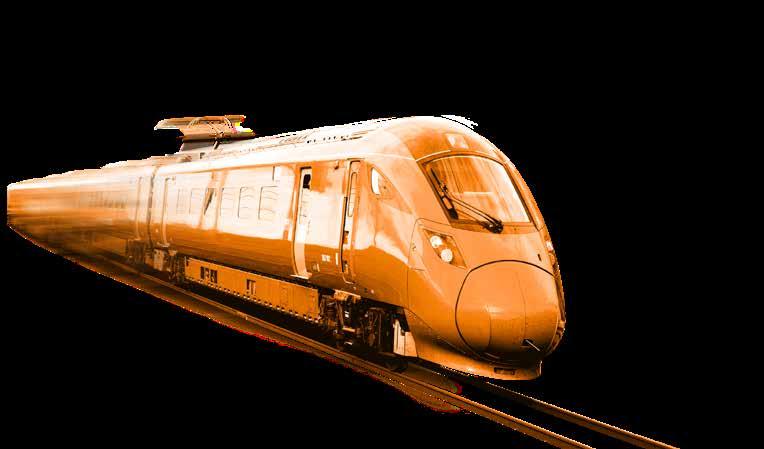
6.1 Flooding of coastal regions.
6.2 Increased OLE corrosion rates in coastal regions.
7. FREQUENT AND MORE INTENSE RAINFALL
7.1 Foundation washout leading to OLE failure.
7.2 Reduced stability of embankments due to increased ground swell.
7.3 Increased number of trippings.
7.4 Increased flooding and water ingress from adjacent structures such as bridges and cutting walls.



